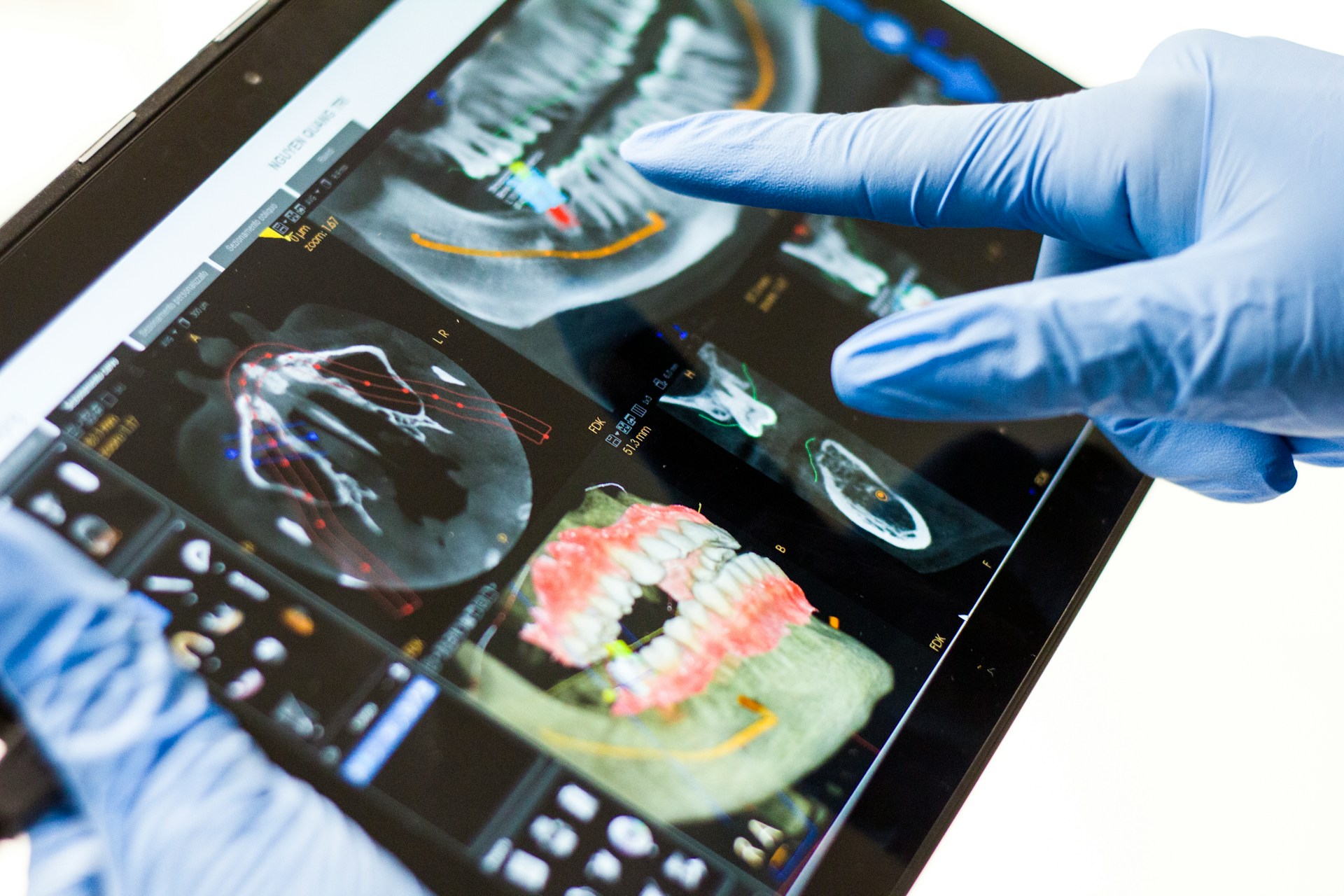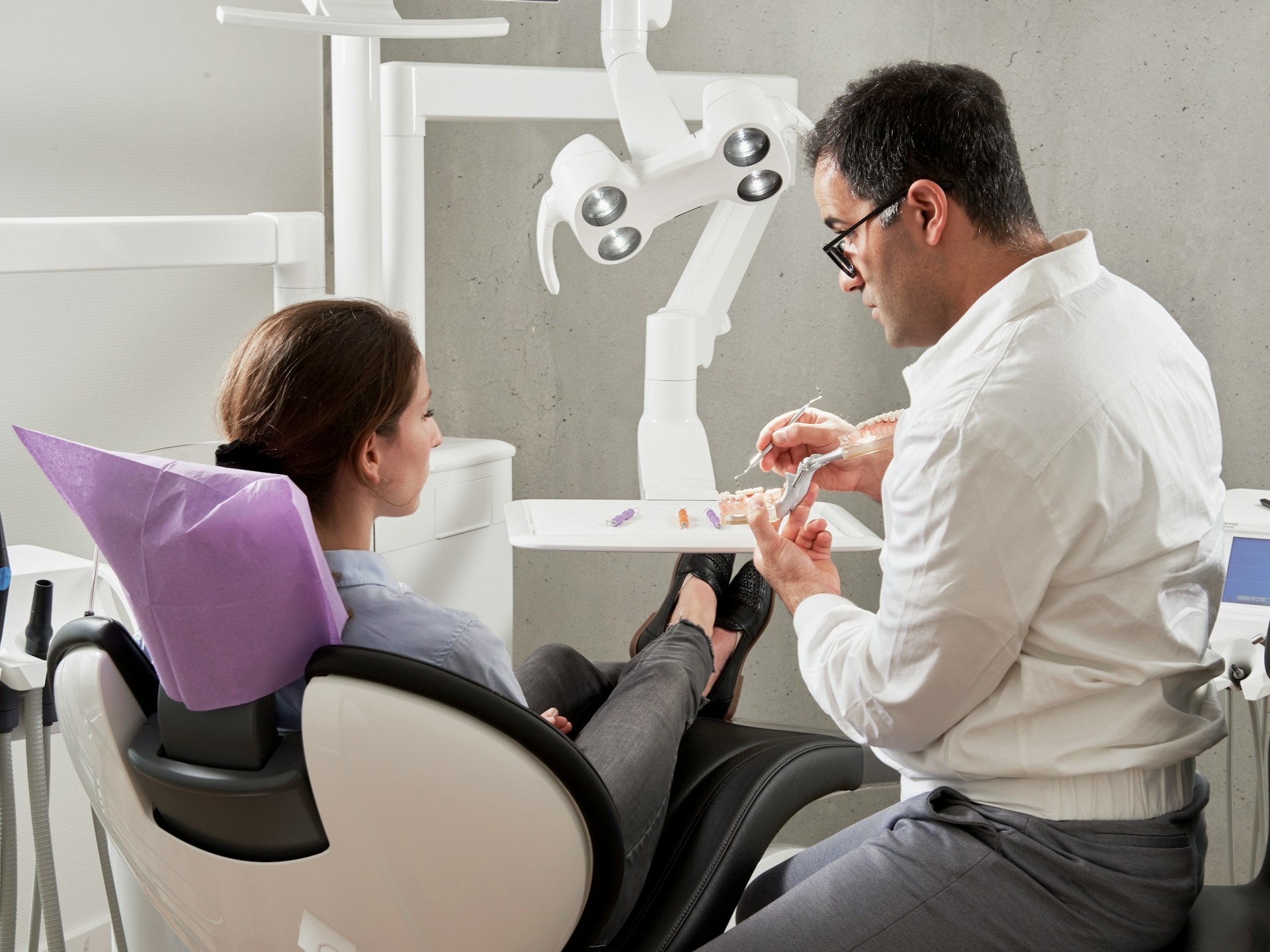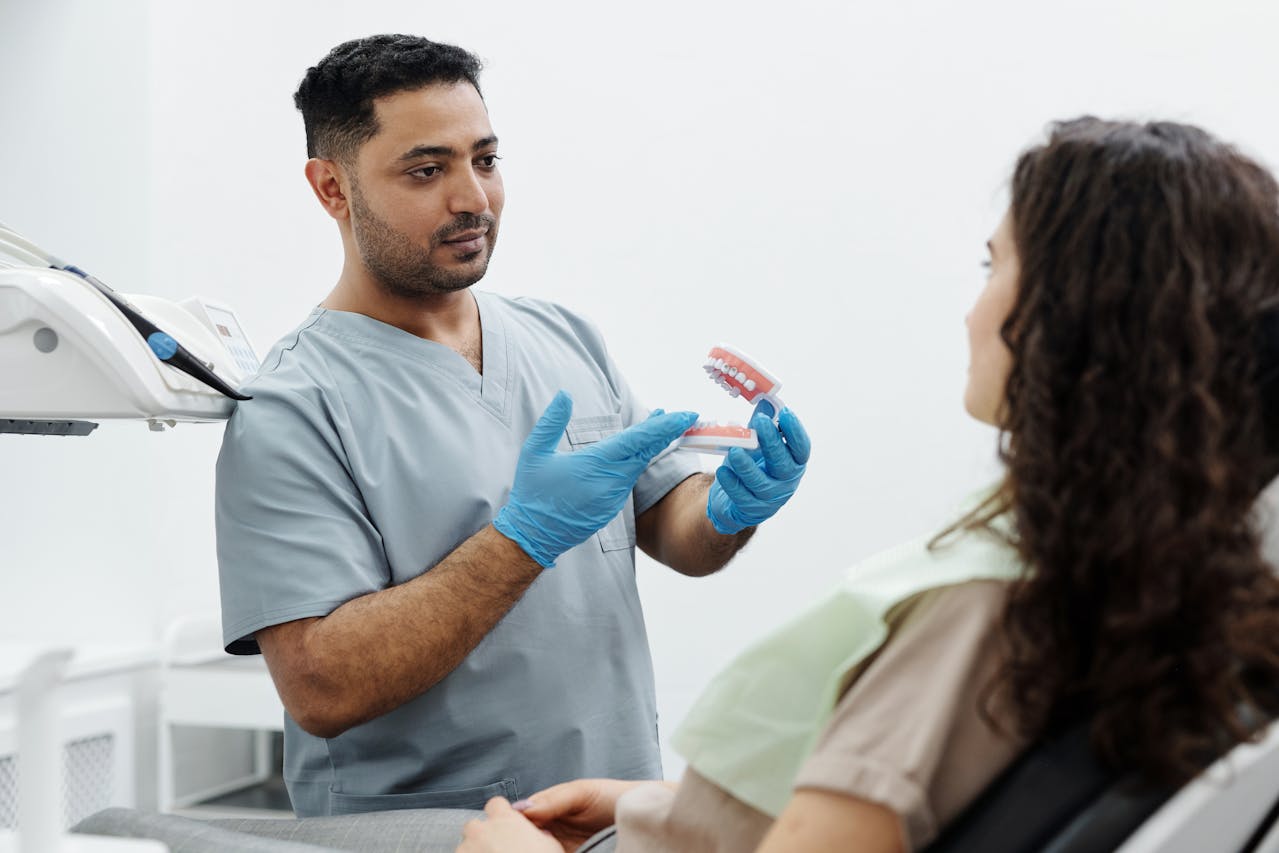Google Paid Ad Strategies For Dental Clinics In Florida

For Florida dental clinics, Google Ads is a non-negotiable investment for capturing high-intent patients actively searching for care. In a state with 65 of 67 counties designated as Dental Health Professional Shortage Areas, the opportunity is immense, yet competition in metropolitan hubs like Miami, Orlando, and Tampa is fierce.
A successful strategy hinges on more than just launching a campaign; it requires a seamless operational system to capture every inbound lead. This is where an AI receptionist for dentists becomes essential, answering 100% of calls from ad-driven traffic 24/7 and booking appointments directly into your practice management system, ensuring no lead is lost to a busy signal or voicemail.
Key Takeaways
- With 65 of 67 counties designated (in full or part) as dental HPSAs and 7.1M+ Floridians in shortage areas, geo-targeting outside major metros can reduce CPCs and lift conversion rates.
- Mobile is where more than 90% of local searches take place. You need to make sure that your page loads fast and is easy to use on small screens.
- Dental clinics can be revolutionized by local service ads. The "Google Screened" badge (soon to be Google Verified) is prominently displayed, and they rank above even the conventional sponsored advertising.
- Dental offices typically spend between $50 and $85 every lead, and they may spend anywhere from $175 to $325 per new patient.
- An effective campaign can generate an ROI of 300–500% (still depends on booking). This implies that you make $3–$5 in new patient revenue for every $1 you invest.
- Combining your Google Ads with a 24/7 AI receptionist lets you establish a closed-loop system that converts clicks into confirmed appointments.
1. Master Florida's Unique Dental Market Landscape
Understanding Florida’s specific market dynamics is the foundation of any effective Google Ads strategy. The state's dentist-to-population ratio of 51.88 per 100,000 is below the national average, creating a paradox of high demand and intense local competition, especially in urban centers.
Strategic Implications for Florida Dentists:
- Target Underserved Areas: With over 7.1 million Floridians living in shortage areas, geo-targeting campaigns outside major city centers can yield lower cost-per-click (CPC) and higher conversion rates.
- Prepare for Metro Competition: In cities like Miami or Orlando, expect higher CPCs, ranging from $6.50 to $9.75 for competitive keywords. Your ad copy and landing pages must be exceptionally compelling to stand out.
- Leverage Localized Service Needs: Tailor your ad groups to specific community needs. For instance, campaigns in retirement-heavy areas might focus on dentures and implants, while family-oriented suburbs could emphasize pediatric and preventive care.
2. Set Up Your Google Ads Account for Maximum Efficiency
A well-structured account is crucial for managing campaigns across multiple Florida locations or for a single practice offering diverse services. Poor structure leads to wasted budget and confusing performance data.
Account Setup Best Practices:
- Use a Clear Campaign Hierarchy: Create separate campaigns for each major service line (e.g., General Dentistry, Cosmetic Dentistry, Emergency Care, Dental Implants). This allows for precise budget control and keyword targeting.
- Implement Location Targeting from the Start: For single-location practices, use a tight radius (e.g., 5-10 miles). For DSOs or multi-location practices, create dedicated campaigns or ad groups for each office, using its specific address and phone number in ad extensions. This ensures Google serves the most relevant ad to a searcher near each clinic.
- Link Your Google Business Profile: This integration is critical. It allows Google to pull your business hours, reviews, and photos directly into your ads, significantly boosting trust and click-through rates. It also enables Local Service Ads.
Arini Integration Tip: Ensure your Google Ads are linked to a phone number that routes to your Arini AI Receptionist. This guarantees every call, whether from a bustling Miami campaign or a quiet Naples one, is answered instantly and handled professionally, feeding directly into your seamless PMS integration for appointment scheduling.
3. Conduct Precision Keyword Research with Google Ads Keyword Planner
Your keyword strategy is the engine of your campaign. Broad, generic terms are expensive and attract unqualified traffic. Focus on high-intent, long-tail keywords that signal a patient is ready to book.
Effective Florida Keyword Tactics:
- Use Geographic Modifiers: Combine your service with specific Florida city or region names (e.g., "emergency dentist Tampa," "teeth whitening Miami Beach," "affordable dentist Jacksonville").
- Target "Near Me" and "Emergency" Searches: These are high-intent, mobile-driven searches. Bid aggressively on terms like "dentist near me" or "toothache relief Orlando."
- Leverage Long-Tail Keywords: These are more specific and less competitive. Examples include "Invisalign for teens in Fort Lauderdale" or "same-day dental crown in Sarasota."
Negative Keywords Are Crucial: Add a robust list of negative keywords to prevent your ads from showing for irrelevant searches. Common examples include "free," "jobs," "salary," "at home," or the names of your direct competitors. This can save 20% or more of your wasted ad spend.
4. Craft High-Converting Ad Copy That Differentiates Your Practice
Your ad copy has seconds to convince a potential patient to click. It must clearly articulate your unique value proposition and speak directly to the searcher's pain point or desire.
Elements of a Winning Dental Ad:
- Headlines with Primary Keywords: Include your main keyword (e.g., "Emergency Dentist") in your headline to improve relevance and Quality Score.
- Compelling Pain-Point or Benefit-Driven Descriptions: Instead of "We offer dental services," try "Suffering from a toothache? Get same-day relief." or "Achieve your dream smile with our cosmetic dentistry."
- Strong Call-to-Action (CTA): Use direct CTAs like "Book Your Appointment," "Call Now for Emergency Care," or "Get Your Free Consultation."
- Utilize Ad Extensions: These are free real estate that provides more information and can increase CTR by 10-15%. Essential extensions for dentists include:
- Call Extension: Makes your phone number clickable on mobile.
- Location Extension: Shows your address and a map link.
- Sitelink Extensions: Link to key pages (e.g., "View Our Services," "Meet Our Dentists," "Read Patient Reviews").
Florida Compliance Note: Be mindful of Florida Dental Board advertising rules. Avoid phrases like "painless" or "guaranteed results." Focus on factual, verifiable claims about your practice and services.
5. Optimize Your Landing Pages to Convert Clicks into Calls
A click is just the first step. Your landing page must be designed to turn that interest into a booked appointment or a phone call. A poorly designed landing page can sabotage an otherwise perfect campaign.
Landing Page Essentials for Florida Dentists:
- Match Your Ad Message: If your ad is about "Emergency Dental Care in Tampa," your landing page should be dedicated to that service, not your general homepage.
- Make the Phone Number Prominent and Clickable: Your phone number should be in the header and repeated on the page. On mobile, it must be a clickable link. This is where your ad-to-call funnel is completed.
- Feature a Simple, HIPAA-Compliant Booking Form: For patients who prefer to book online, ensure the form is short (name, phone, email, appointment type) and HIPAA-compliant. A complex form will increase abandonment.
- Include Social Proof: Showcase patient testimonials, your Google review score, and any awards or certifications (e.g., "Google Screened" soon to be Google Verified for LSAs).
- Ensure Mobile-First Design: Over 90% of local searches happen on mobile. Your page must load quickly and be easy to navigate on a small screen.
The Arini Advantage: Your landing page's phone number should ring to Arini. This ensures that every call received from a high-intent, ad-driven lead is answered on the first ring, 24/7, and converted into a booked appointment in your PMS, even outside business hours. This directly addresses the problem of most incoming lead calls being mishandled by front desk staff.
6. Implement Robust Call and Conversion Tracking
You can't manage what you don't measure. Without proper tracking, you're flying blind and have no idea which campaigns or keywords are driving actual appointments and revenue.
Key Tracking Setups:
- Call Tracking: Use a unique phone number on your website and landing pages that is distinct from your main office line. This allows you to see exactly how many calls come from your Google Ads. Your AI receptionist platform should provide this data natively.
- Form Submission Tracking: Set up conversion tracking in Google Ads for your online booking form submissions.
- Link to Your PMS: The ultimate goal is to track from ad click to production value. Your receptionist platform should integrate with your PMS (like OpenDental or Dentrix) to track which calls resulted in actual booked appointments and their associated treatment value.
Why This Matters: By tracking conversions, you can calculate your true cost per acquisition and return on ad spend (ROAS). This data is critical for optimizing your bids and budget. Arini's analytics dashboard for tracking call and appointment metrics provides this closed-loop reporting, showing you the direct revenue impact of your Google Ads investment.
7. Explore and Leverage Local Service Ads (LSAs)
Local Service Ads are a game-changer for local service businesses like dental clinics. They appear at the very top of Google search results, above even the traditional paid ads, with a prominent "Google Screened" badge.
Benefits of LSAs for Florida Dentists:
- Pay-Per-Lead, Not Per-Click: You only pay when a potential patient calls you or sends a message through the ad. This model provides more predictable patient acquisition costs.
- Enhanced Trust and Credibility: The "Google Screened" badge is a powerful trust signal. To qualify, Google vets your business license, insurance, and conducts a background check on your staff.
- High-Quality, Local Leads: LSAs are specifically designed for "near me" searches and are shown only to users in your defined service area.
Getting Started: The setup process is separate from your main Google Ads account and can take 2-4 weeks for verification. It’s worth the effort, especially for general dentistry practices in Florida looking for a more cost-effective lead source alongside traditional Search campaigns.
8. Ensure Full HIPAA and Florida Dental Board Compliance
Running a healthcare ad campaign is not like advertising a restaurant. You must adhere to strict regulations to avoid fines and account suspensions.
Critical Compliance Areas:
- HIPAA Compliance: Any form, chatbot, or communication system on your website that collects patient information (name, phone number, reason for visit) is handling Protected Health Information (PHI) and must be HIPAA compliant. This includes your appointment booking system and your phone system. Arini is a HIPAA-compliant platform, ensuring all patient data is handled securely.
- Google's Healthcare Policies: Google prohibits misleading claims, such as "100% pain-free" or "guaranteed results." Your ad copy must be truthful and evidence-based.
- Florida Dental Board Rules: The Florida Board of Dentistry has specific guidelines on advertising, including rules about using terms like "specialist" (you must be a board-certified specialist to use it). Ensure all claims about your services and qualifications are accurate and verifiable.
Proactive Step: Before launching any campaign, review the Florida Board of Dentistry's advertising guidelines and Google's healthcare and medicines policy.
9. Start with a Realistic Budget and Scale Intelligently
There’s no one-size-fits-all budget for Google Ads. The right amount depends on your market, goals, and competition.
Budgeting Guidelines for Florida:
- Competitive Markets (Miami, Orlando, Tampa): Start with a minimum of $1,500–$5,000 per month to gather enough data for optimization.
- Less Competitive Markets: A budget of $1,000–$2,500 per month may be sufficient.
- Expect Real Costs: The average cost per lead for dental practices is between $50-$85, and the cost per new patient can range from $175-$325.
Key to Success: Focus on your return on ad spend (ROAS). A well-optimized campaign can achieve a 300-500% ROAS. This means for every $1 you spend, you generate $3-$5 in new patient revenue. Track this metric closely and scale your budget up only when you are profitably acquiring patients.
10. Plan for a 90-Day Optimization Period and Continuous Management
Google Ads is not a "set it and forget it" tool. It requires ongoing attention and refinement to maintain peak performance.
Your Optimization Timeline:
- Weeks 1-4: Launch your campaigns, gather initial data, and monitor for any major issues (e.g., disapproved ads, very low CTR).
- Weeks 5-8: Analyze performance data. Pause underperforming keywords, adjust bids on high-converting ones, and test new ad copy variations (A/B testing).
- Month 3 Onward: Focus on scaling. Increase budgets for top-performing campaigns, expand your keyword list, and test new ad formats like Performance Max. Continuously review your case studies showing ROI from reduced missed calls to see the full impact of capturing every lead.
The Operational Link: Your marketing investment is only as good as your ability to convert leads. By integrating your Google Ads with a 24/7 AI receptionist, you create a closed-loop system that maximizes the return on every dollar spent, turning clicks into confirmed appointments and, ultimately, into production.
Frequently Asked Questions
Q: How much should a Florida dental practice spend on Google Ads each month?
A: It varies by location. In highly competitive markets like Miami or Orlando, a starting budget of $1,500–$5,000 per month is recommended. In less competitive areas, $1,000–$2,500 may suffice. The key is to track your return on ad spend (ROAS) and scale based on profitability.
Q: What is the difference between Google Ads and Google AdSense for dentists?
A: Google Ads is for advertisers (like your dental practice) who want to pay to show their ads on Google. Google AdSense is for website publishers (like a blog) who want to earn money by displaying Google's ads on their site. Dentists use Google Ads, not AdSense.
Q: How do I track phone calls from Google Ads to measure appointment conversions?
A: You need to implement call tracking. This is done by using a unique, trackable phone number on your website that is triggered by Google Ads traffic. Your analytics dashboard for tracking call and appointment metrics should provide this data, showing which calls came from ads and whether they converted to booked appointments.
Q: Can I run Google Ads for multiple dental office locations in Florida from one account?
A: Yes, and you should. Create a single Google Ads account for your entire practice or DSO. Then, structure your campaigns so that each location has its own dedicated campaign or ad group with its specific address, phone number, and service area. This is essential for multi-location support for DSOs and dental groups.
Q: How can I ensure my dental Google Ads comply with Florida Dental Board regulations?
A: Review the Florida Board of Dentistry's advertising guidelines to ensure your ad copy is truthful and does not make unsubstantiated claims (e.g., "painless," "best dentist"). Avoid using terms like "specialist" unless you are a board-certified specialist. Ensure all patient data collection is handled through HIPAA-compliant patient communication tools.









